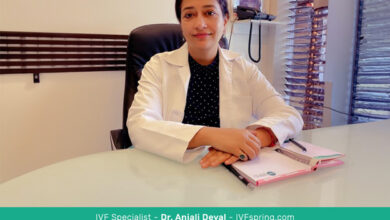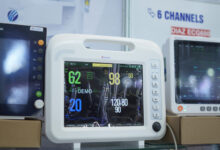TEE is becoming an integral part of cardiac surgeries-Dr. Shweta Yemul Golhar

Mumbai (Maharashtra) [India]: As per a recent report by Centre for Disease Control and Prevention (CDC), heart diseases are a leading cause of death in the United States of America, and creates an enormous burden for people, communities, and healthcare providers and systems. Not just in the United States of America, cardiovascular diseases are the world’s leading cause of death and claims as many as 17.9 million lives each year, globally. According to a study by the Indian Council of Medical Research and Registrar General of India, India accounts for over 60 per cent of the world’s heart disease burden.
According to Dr. Shweta Yemul Golhar, a cardiac anesthesiologist, intensivist and echocardiogram faculty at Harvard Medical School, transesophageal echocardiogram (TEE) is becoming an integral part of cardiac surgeries. “Intraoperative imaging has changed the course of cardiac procedures. For heart surgeries that do not involve opening the chest, TEE guidance provided by anesthesiologists helps cardiologists in procedures such as repairing or replacing a valve, mending conditions like atrial septal defect, and assessing the success of the procedure,” she says.
It’s February — the American Heart Month! Ever wondered what makes this month important not only in America, but also globally? It is the need to address, prevent and treat heart diseases that make for the number one killer (of diseases) in the United States of America.
And therefore, it is imperative for the medical fraternity as well as other stakeholders across the world to address this sensitive concern.
The popularity and aid provided by ultrasound technology is testimony to the fact that the market for cardiovascular ultrasound systems is estimated to increase rapidly over the next six years. A recent report states that the cardiovascular ultrasound system market was valued at USD 1.66 billion in 2021 and is expected to reach USD 2.52 billion by 2029, registering a CAGR of 5.37% during the forecast period of 2022 to 2029.
Innovations in the field of ultrasound technology have been extraordinary. Over the years, cardiac ultrasound technology (echocardiography) has become extremely adeptat detecting serious medical conditions like heart defects, leaky or tight valves and functional abnormalities, providing clear three-dimensional images of the heart in real-time.
That said, ultrasound technology has been a crucial part of medical care for many years. For cardiac ailments, echocardiography or cardiac ultrasound is the primary assessment method. This method provides information regarding the anatomy and functionality of the heart through ultrasound imaging. However, conventional echocardiography from the surface of the chest wall is not enough to provide detailed imaging of the heart or to observe certain parts of the organ. In such cases, a TEE using a probe through the mouth while under anesthesia provides a better assessment as the probe is closer to the heart.
During cardiac surgeries, TEE provides crucial and timely information to guide medical treatment and provide information that help surgeons make decisions during the operation. In many parts of the world, echocardiography trained anesthesiologists perform TEE while providing anesthesia during cardiac surgery.
The National Centers for Biotechnology Information states that there is an increasing prevalence of ischemic heart disease across the globe. This condition is known to affect 1,655 per 100,000 individuals, which may rise to 1,845 per 100,000 individuals by the year 2030. Alarming, isn’t it? The emerging prevalence of cardiovascular diseases will therefore surge the demand for cardiovascular ultrasound tests such as 3D and 4D imaging.
Dr. Shweta Yemul Golhar adds, “3D ECHO imaging assisted 3D printing is ushering in a new era of surgical planning for complex congenital heart conditions and heart valve repairs. In these cases, a 3D model of the heart or valve fashioned from the 3D images helps to understand complex anatomy, estimate surgical difficulties, formulate a surgical plan, or simply understand the physiology.”
Latest advancements in echocardiography, such as 3D imaging, provide lifelike images that make it easier for the surgeon to understand the anatomy. The advancements in imaging technology allows for the observation of dynamic anatomical relationships and abnormalities from any angle and with the ability to cut images into slices as required. It helps cardiac anesthesiologists determine the size and function of the heart. 4D real-time imaging provides prompt reconstruction to generate high-resolution images to assist during the complex procedures.
Echocardiography, once the prerogative of the cardiologists, is being adopted by anesthesiologist expert at echocardiogram to deliver lifesaving outcomes for cardiac surgery. With advancement in ultrasound and medical imaging technology, it is now possible to obtain detailed images of the heart, assisting anesthesiologists and surgeons to perform complex cardiac procedures with greater accuracy and safety.








